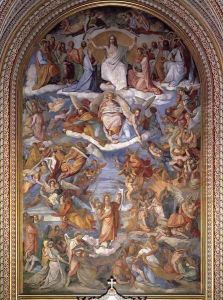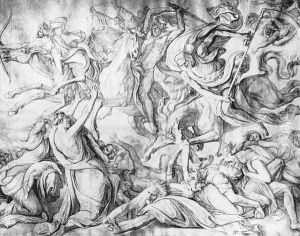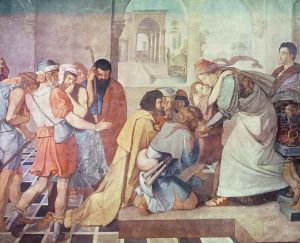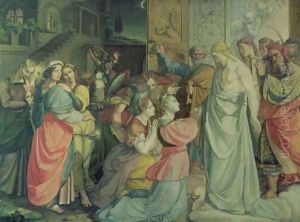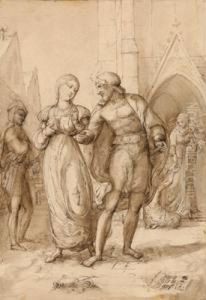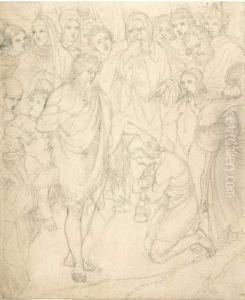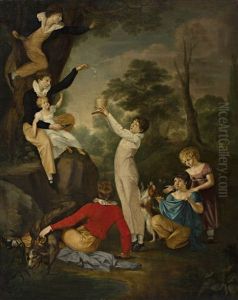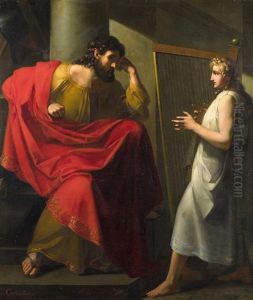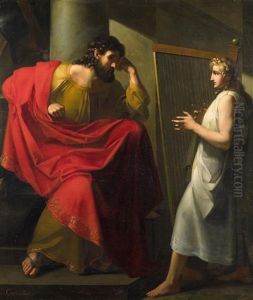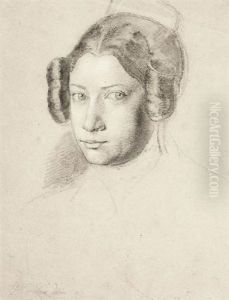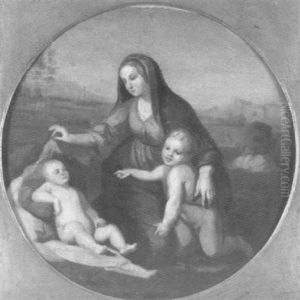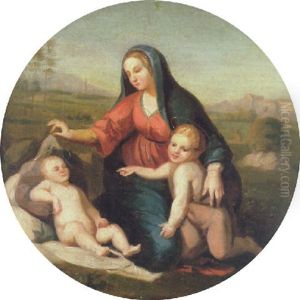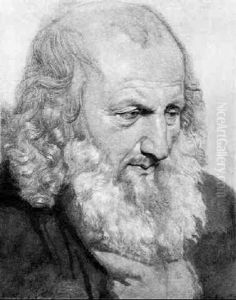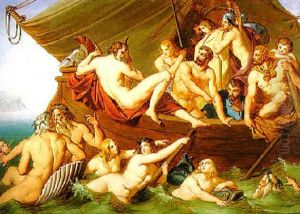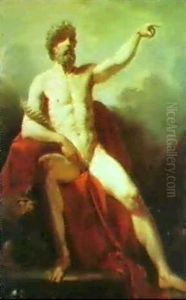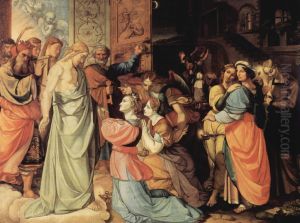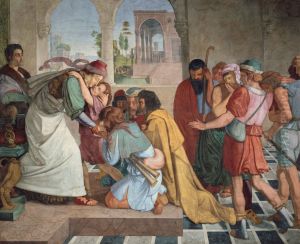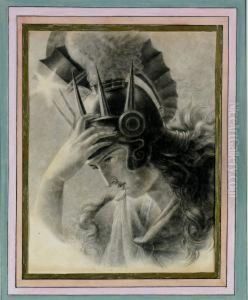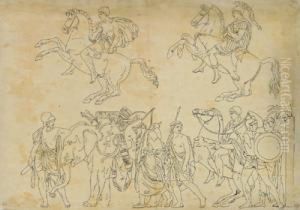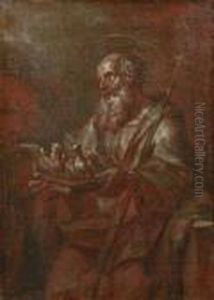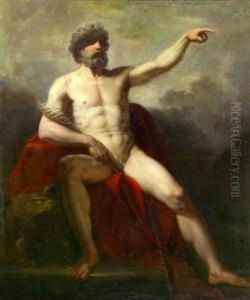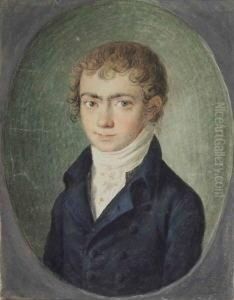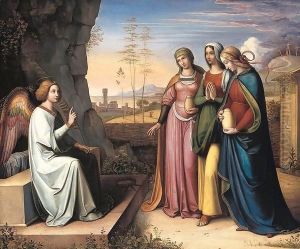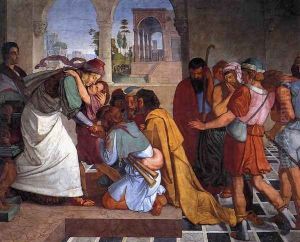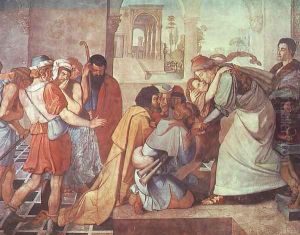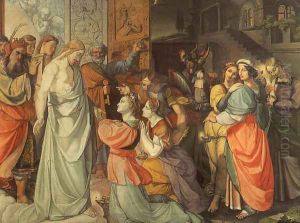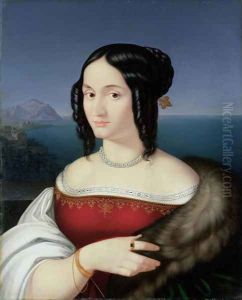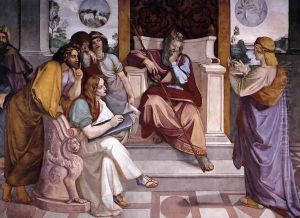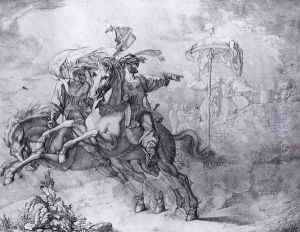Peter von Cornelius Paintings
Peter von Cornelius was a German painter born on September 23, 1783, in Düsseldorf, then in the Electorate of Cologne, a state of the Holy Roman Empire. He was a leading figure of the German Romantic movement and one of the primary artists involved in the Nazarene movement, which sought to revive honesty and spirituality in Christian art. Cornelius received his early training from his father, who was a painter, before enrolling at the Düsseldorf Academy, where he further honed his artistic skills.
During his formative years, Cornelius was influenced by the works of the Italian Renaissance and the ideals of the early Nazarenes, a group of like-minded artists who rebelled against the neoclassical conventions of the time. In 1811, Cornelius moved to Rome, which was a center for artistic study and activity. There, he joined the Brotherhood of Saint Luke, also known as the Nazarenes, which included other German artists such as Friedrich Overbeck and Wilhelm Schadow.
Cornelius's work is characterized by its focus on biblical and mythological themes, often depicted with a sense of monumentality and with an emphasis on linear design. His frescoes and murals are particularly notable, and he was responsible for significant commissions, including work for the Casa Bartholdy in Rome and the Ludwigskirche in Munich.
In 1825, Cornelius was appointed director of the Academy of Fine Arts in Munich by King Ludwig I of Bavaria. This position granted him considerable influence over the development of German art, and he played a critical role in the design and decoration of buildings in the city, especially in the Königsbau of the Residenz and the Glyptothek. His Munich period was marked by a series of large-scale projects, including designs for the frescoes in the Ludwigskirche and the Allerheiligen-Hofkirche.
Later in life, Cornelius moved to Berlin, where he continued to work on monumental art projects. His legacy includes not only his own paintings and designs but also his impact on the next generation of artists through his teaching and leadership in various artistic institutions.
Peter von Cornelius passed away on March 6, 1867, in Berlin, leaving behind a body of work that played a significant role in shaping the course of 19th-century German art. His style was influential in promoting a revival of fresco painting and in asserting a nationalistic expression in the arts, which was aligned with the Romantic ideals of his time.
